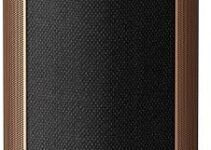As she prepares to conduct a simulated exam on a stand-in patient, second-year nursing student Heidi Birrell wraps her eyes in a piece of technology that’s no longer confined to the future.
Key points:
- Doctors are trialling the use of augmented reality headsets to perform remote medical exams
- The research team hopes to expand the technology into aged care facilities
- Regional nursing homes where staff are scarce could benefit from the trial
She’s wearing an augmented reality (AR) headset that lets a doctor see and hear everything she does with the patient.
“So you’ve fallen on your wrist Eve?” Ms Birrell asks as she starts to run through her examination.
The AR technology means a doctor can monitor her every move, and speak with her through headphones in real time.
“I think that’s great. You can get extra support [and] advice,” she says.
“[It’s] very exciting. Definitely. You’ve got the knowledge from a doctor literally next to you in your head … telling you what to say and do.”
At La Trobe University’s Digital Innovation Hub, researchers are trialling the use of AR technology to bring doctors into aged care homes virtually.
AR is a step up from virtual reality (VR), letting users access digital content and information by seeing virtual documents and monitors in their live headset view.
Researchers say this could be used to improve remote medical exams for both patients and doctors.
The university is working with the Victorian Virtual Emergency Department (VVED), a health service that sees non-critical patients via video, to put the Microsoft HoloLens headset through its paces.
Emergency medicine doctor Jennie Hutton is wearing it as she places a wireless Bluetooth stethoscope on another stand-in patient.
Across the lab in a closed room, another doctor, the VVED’s director Loren Sher, is seeing and hearing everything on a laptop.
“That’s good, the numbers are coming through great,” Dr Sher says.
Bringing doctors’ eyes into remote places
Virtual medical examinations experienced steady growth during the peak of COVID to relieve pressure on overwhelmed hospital emergency departments.
The VVED now sees an average of about 400 patients each day.
Now Dr Sher and the team at La Trobe are aiming to bring the AR technology to residential aged care.
“It’s really taking us into the room,” Dr Sher said.
“We are really bringing our eyes into the consultation so we are there with the nurse — seeing what they’re seeing, hearing what they’re hearing.”
The benefits for aged care could be profound. Many regional nursing homes struggle to secure enough in-person visits from doctors.
Without AR, doctors can examine patients remotely, but this often requires two staff members: a nurse speaking with the resident while a second staff member films with an iPad or a phone.
In many aged care homes, freeing up a second staff member is a challenge.
“[The nurse is] often a sole provider in the aged care facility, so we need to enable them to do as much of the examination hands-free as possible,” Dr Sher said.
In Corryong, about 320 kilometres from Melbourne in Victoria’s north-east, associate nurse Marsh Suminggao is all too familiar with how remote examinations work now.
She said using AR headsets would be easier than needing staff members to hold up devices.
“That would be handy for us too, especially in rural and remote areas,” she said.
“When the nurse would be doing the assessment with the patient or asking the patient, ‘What’s the problem?’ … on the other side of the video [the doctor] would be able to see and hear what we are doing.”
But AR examinations face other hurdles, Ms Suminggao said.
For starters, like many regional areas, Corryong struggles with internet access. Sometimes the WiFi goes down, and the mobile service also has reliability issues.
Aged care residents living with dementia might also find it uncomfortable to be examined by someone wearing a headset.
Tech could improve healthcare in rural Australia
There will also be some technological learning involved for nurses and health workers who wear the AR headset.
When it’s on, they will not only see the resident. They’ll also be able to select virtual health records and view monitors in real time.
“[AR] is about putting objects in the real world that aren’t actually in the real world,” said Jeff Jones, manager of La Trobe’s Digital Innovation Hub.
“So I can have a window with patient information on it, or I can be transmitting the video to a doctor.”
Loading…
The technology behind the HoloLens headset has been around since 2015. But it needs to be tested in hospital and aged care settings before it’s approved by general use by the Therapeutic Goods Administration.
Dr Sher believes it won’t be long until AR exams start to appear in selected aged care homes.
“We’re not talking years away,” she said.
“We’re hoping to get this out into the community as a proof of concept in the next couple of months.
“This is going to improve care, not just for patients in aged care. This is going to improve care for patients in remote and rural settings where there really [are] staffing deficits at the moment.”
Loading…
Posted , updated


